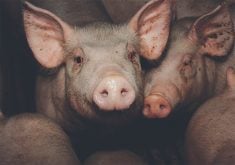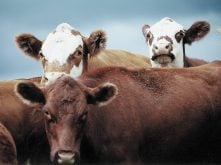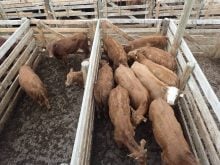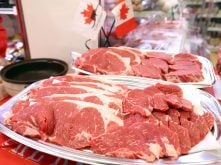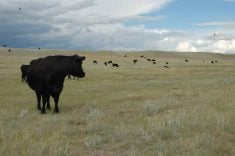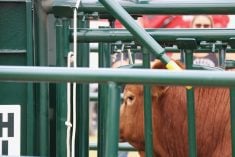CORONATION, Alta. – Grasshoppers are winning the battle in the war against farmers.
“There is nothing on the shelf that is going to protect us from this coming outbreak,” said Agriculture Canada entomologist Dan Johnson.
He recommends against spraying if there are 10 or fewer hoppers per sq. metre.
“We’re not in the business of trying to wipe out all the grasshoppers,” he told a farmer meeting in Coronation.
“We just want to reduce the damage. You can live with small numbers of grasshoppers.”
Read Also
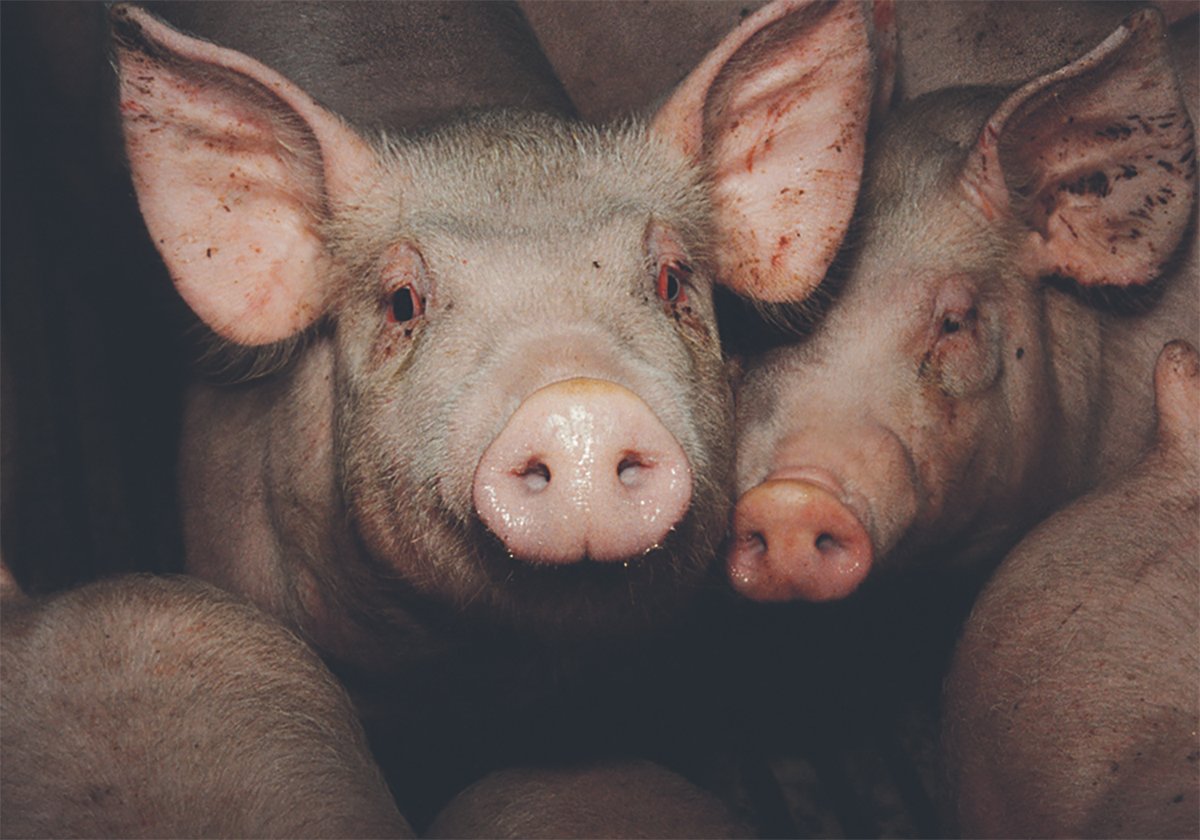
The Western Producer Livestock Report – October 30, 2025
Western Producer Livestock Report for October 30, 2025. See U.S. & Canadian hog prices, Canadian bison & lamb market data and sales insights.
Research to find grasshopper diseases or natural enemies has turned up little. So far, the only real enemy is time and weather.
“The weather conditions are making them increase and decrease in different zones,” he said.
Fungal diseases affect grasshoppers, but these take a couple of years to lower numbers and often the insects can cure themselves. Grasshoppers’ preferred body temperature is 39 C and they can sometimes cure themselves by basking in the sun.
When grasshoppers start to appear on the edge of fields, farmers need to walk the fields before spraying and assess which species are there and how much damage has been done.
Young insects start on the edge of fields because eggs may have been laid in the outer strips.
Older grasshoppers are more resilient and are harder to kill.
Spraying with insecticide is recommended just after sunrise because the hoppers are active during dry, sunny weather. Several control products are available with various modes of action.
Lorsban 4E, Matador and grasshopper bait in a product such as Eco Bran are effective.
Also registered are Decic EC, Sevin XLR, Cygon and Malathion.
Lorsban 4E tank mixes with most products except the Group 2 herbicides, said Neelan Edbom of Dow Agro Sciences.
Lorsban kills on contact, by ingestion or breathing in the vapor. It is most reliable when the temperature is higher than 25 C.
The bigger the grasshopper, the more product is needed. Users need to wear protective clothing and rubber gloves when handling Lorsban and people should stay out of fields for 24 hours and avoid contact with wet leaves. No more than two applications are recommended per season.
Matador is a synthetic pyrethroid that controls in three ways. However, direct contact on the young insects is best. If spraying pastures, a 14 day grazing restriction should be observed.
Avoid spraying where bees are foraging.
Light rain does not affect it, but a heavy rain could wash it off.
It may not be as effective if applied during hot weather because insect metabolism is higher then and they can break down the poison and survive.
Eco Bran, a wheat bran bait infused with insecticide, can be used on cereals as well as flowering crops such as alfalfa and clover. Neil Wagner of Peacock Industries said it does not harm leaf cutter bees.
The bran is scattered on the ground so it remains active until an insect eats a flake. It should not be applied near open water.
It should be evenly scattered rather than left in piles. Grasshoppers are territorial and may not allow others to come in and eat.
Broadcasting about one pound per acre is effective. This leaves about five flakes in an area the size of a man’s hand. It should be spread early because young hoppers are hungry and easier to kill. A quarter of a flake can kill a nymph while three to four flakes may be needed to kill an adult.
“Treating hatching beds may work if you know where they are. Hatching hoppers are hungry,” Wagner said.



